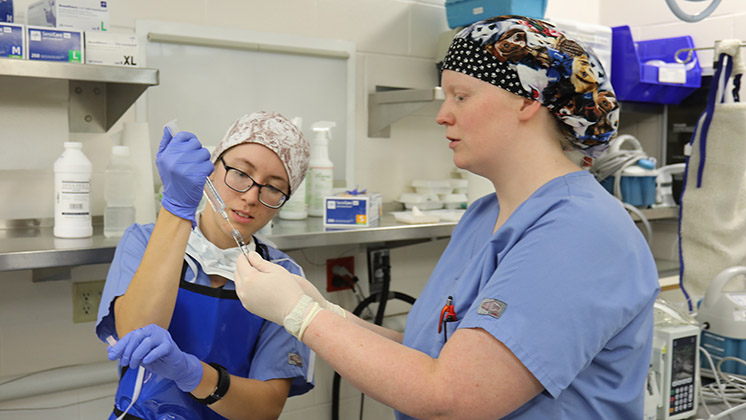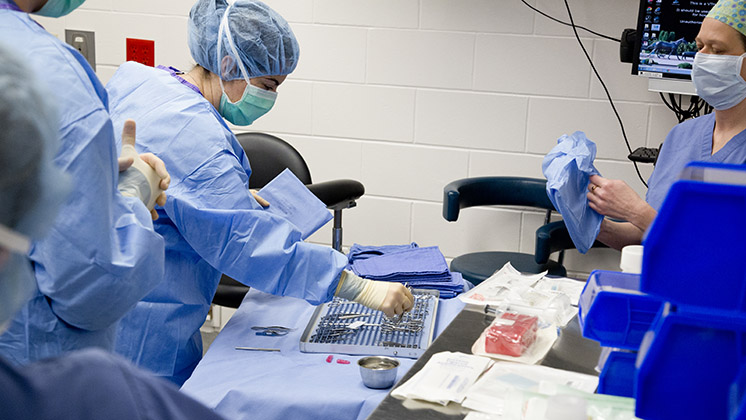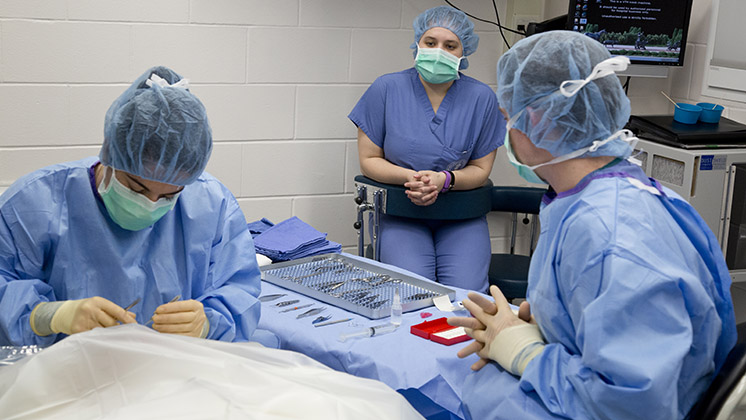
by Kelsey Wirt, MS, LVT and Josh L. Clark, MS, RVT
Becoming a veterinary technician requires several steps, each of which takes a certain amount of time. Let's explore the journey and timeline for aspiring vet techs.
In order to enroll in an AVMA accredited veterinary technology program, you must have earned a high school diploma or equivalent. These programs offer an Associate or Bachelor's degree that can take two to four years to complete depending on the student’s ability to enroll as a full or part-time student.
Decide how to choose the right vet tech program for you.
Veterinary technology programs cover diverse subjects including animal anatomy, pharmacology, surgical nursing, radiology, laboratory procedures, and more. Depending on the program, you may be learning these topics in an in-person or an online setting. Based on the modality, hands-on experience is gained through laboratory courses and/or by completing supervised externships/mentorships at veterinary practices. Learn more about the pros/cons of in-person or online vet tech programs.
Upon graduation from an AVMA accredited vet tech program, graduates pursue credentialing. This involves passing the VTNE and possibly additional state-specific exams.
Becoming a vet tech is a journey that requires commitment and hard work. Depending on the educational route you choose it could take anywhere from 2-4 years or longer to become a credentialed veterinary technician/nurse. This timeline is helpful to know if you decide to go down the path towards becoming a vet tech/nurse.
Find your calling as a Purdue Veterinary Nurse!
Not quite ready to apply? Connect with us to learn more.

Discover how long it takes to pay off vet tech school debt based on various factors including total debt, repayment plans, and post-graduation income.
Read more
Are vet techs and vet nurses the same? They are often used interchangeably, but is each one unique? Learn about the history of the titles, their job duties, and about the growing movement to transition exclusively to vet nurse.
Read more
Learn how to boost your earning potential as a Veterinary Technician (Vet Tech) with our comprehensive guide. Discover the benefits of specializing in specific areas, gaining experience, furthering your education, and more.
Read more